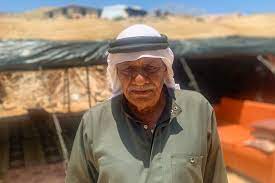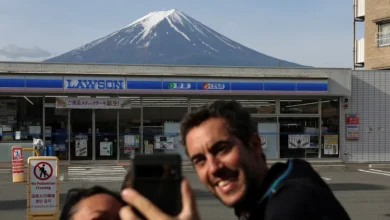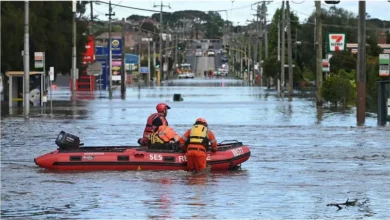‘Better to die there’: Palestinians mourn Ein Samiya displacement

About a week after hastily dismantling and leaving their homes under duress from Israeli settlers, it was hard for the Bedouin former residents of Ein Samiya to talk about the trauma they were still going through.
“When we sit together, we only remember the nice moments we left behind in Ein Samiya, how we played on the land when we were small kids,” said Ibrahim Kaabneh, a young herder and new father. “We don’t want to think about the current situation … or the future.”Kaabneh was sitting on an upside-down bucket near what his mother, wife and baby struggled to call home. The flimsy black tent was propped up by wooden sticks and held down with rocks on the edges to keep it from blowing away. On the hard dirt floor inside were a stove, stacked pots, a couple of small cabinets, and a crib filled with blankets and mattresses. His wife Fatima and mother Amina sat on cheap mattresses in the tent, trying to comfort their baby girl, Amal.
Without enough space inside, the rest of the family’s items were strewn outside the tent – a couch, a full-size mattress, cabinets, and appliances. “There’s no comparison to what [our home] was like before – comfortable, well-insulated, with electricity and a good floor,” Kaabneh said.Now, he and the rest of the displaced village have lost that – along with the elementary school, a way to make a living and a sustainable future as Bedouins in their new location.
Many structures in Ein Samiya – including its school – faced government demolition orders as well as attacks from settlers on adults, children and livestock in the village and even at the nearby spring when they went to draw water.
A distraught Abu Najjeh Kaabneh, the mukhtar or chosen leader of the Ein Samiya community, declared: “We are homeless.”
Reaching the ‘killing point’
According to the elder Abu Najjeh, the decision to leave Ein Samiya came after the settler harassment and violence they had been subjected to the past five years ratcheted up to frightening levels. Constantly surveilling the Bedouins’ activities, settlers from nearby illegal outposts were attacking every night, throwing rocks, invading homes and beating villagers.










